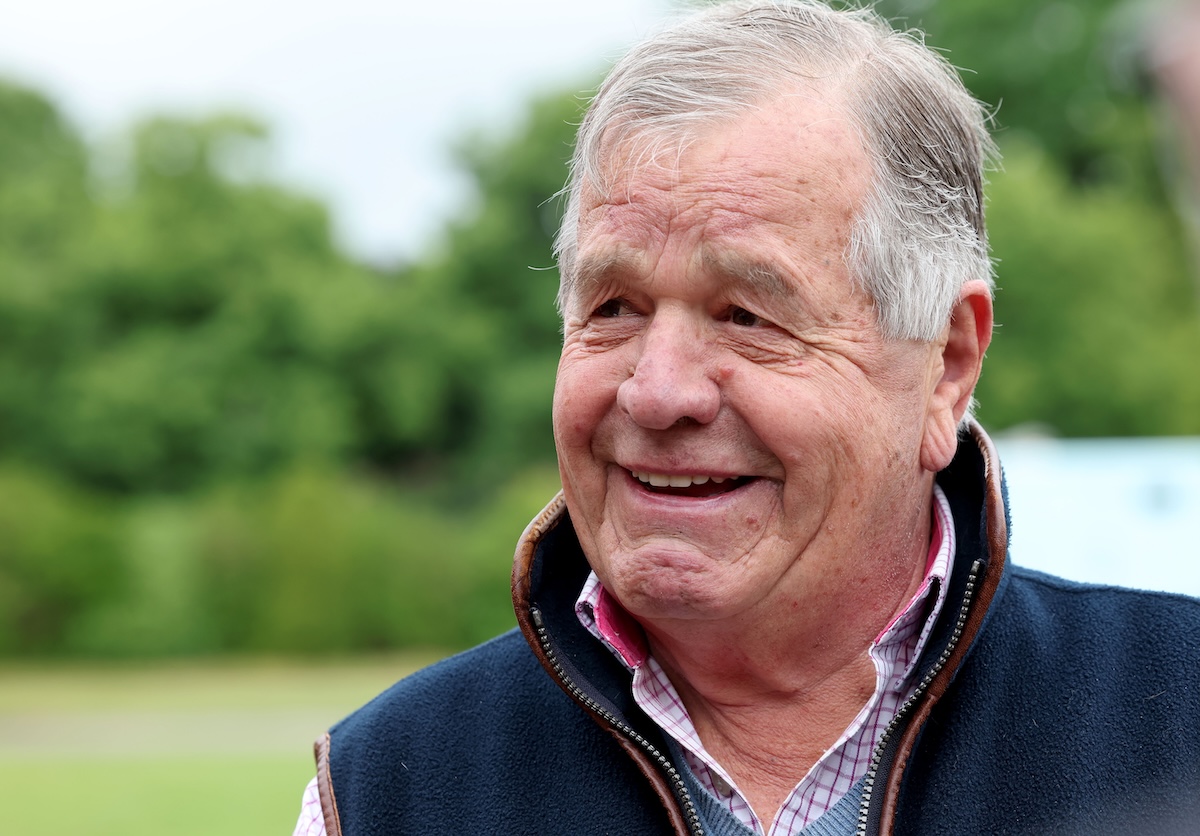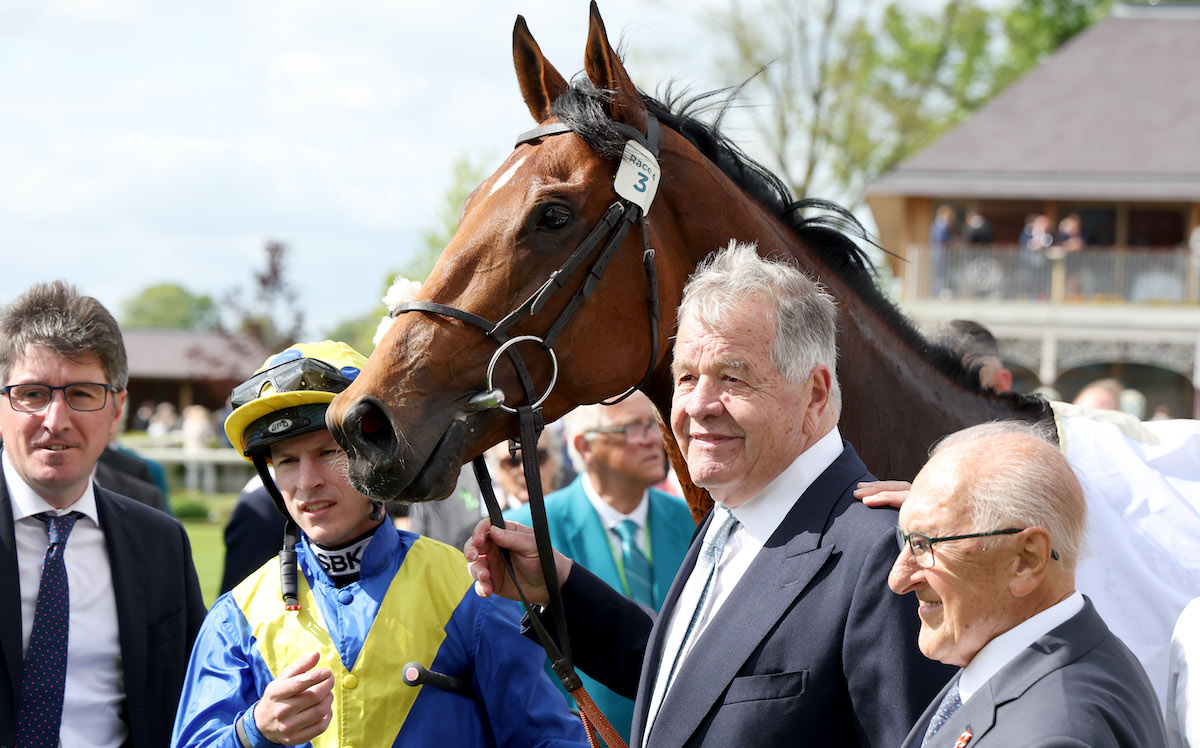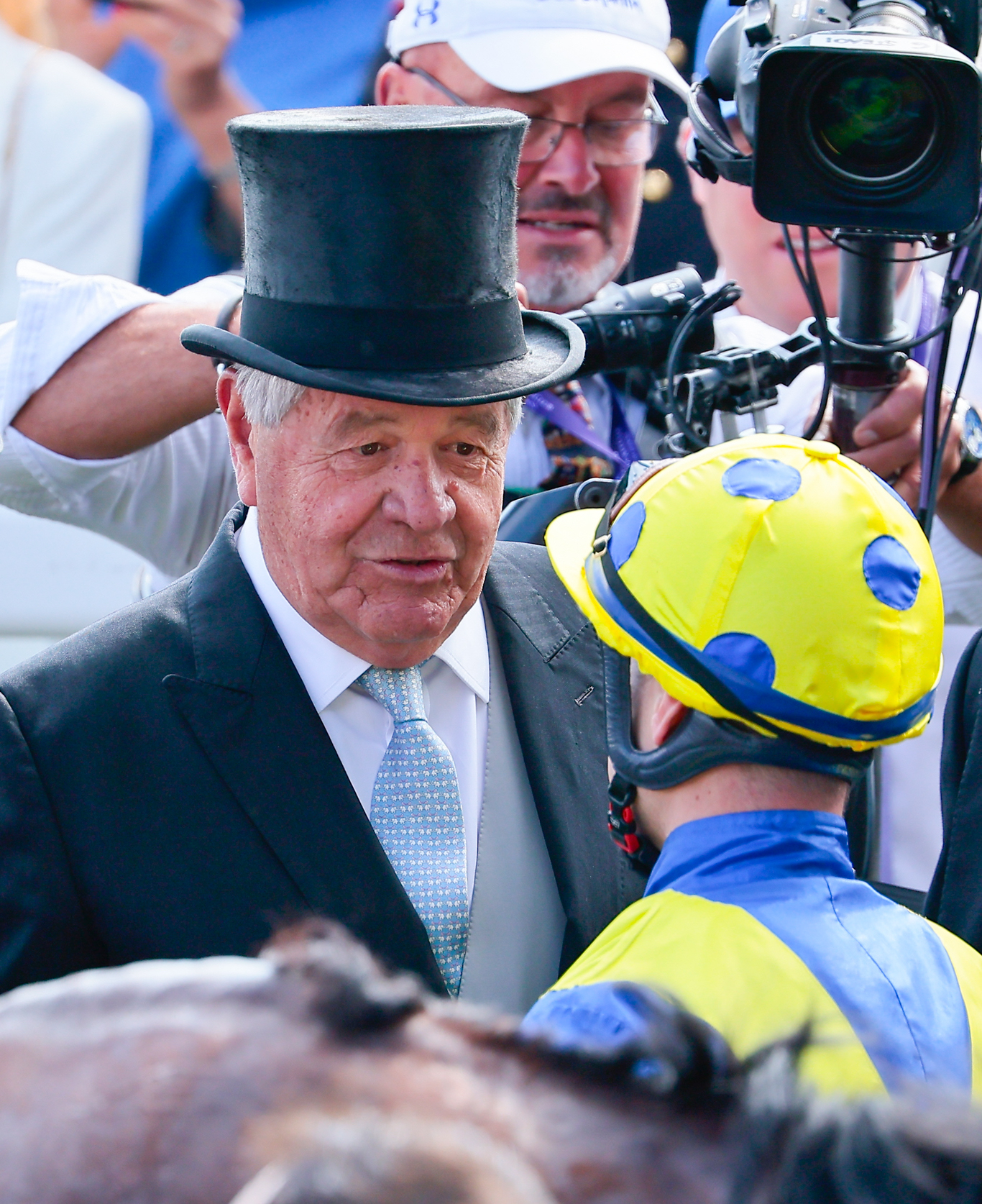
One of the most garlanded trainers of the modern era recently called time on a career spanning six decades and more than 4,100 winners. Steve Dennis considers the achievements of a six-time Derby winner whose record ‘shouts for itself’

However, that doesn’t apply to Sir Michael Stoute, who brought his remarkable training career to a close in November 2024. His final runner finished last; no-one will remember that, but what came before was unforgettable.
There were ten British championships, more than 4,100 winners, six Derby wins, 82 Royal Ascot wins, 27 British and Irish Classics, eight Breeders’ Cup wins, Group 1 glory across six decades.
Top ten horses trained by the legendary Sir Michael Stoute
It is a topic for those interminable, inconclusive tap-room discussions – who was the best? who is the greatest? – but if racing had a Mount Rushmore of European trainers from the last 40-odd years then Stoute’s visage would surely stare from it, alongside Sir Henry Cecil, Andre Fabre and Aidan O’Brien.
Stoute came to Britain from Barbados at the age of 19 in 1965. Before he took out a licence, he had auditioned for the role of BBC racing correspondent but was passed over in favour of Julian Wilson.
 Television’s loss was training’s gain, and the first seeds of what would become a mighty harvest were sown in 1973, Stoute’s second year in Newmarket, when he won the Stewards’ Cup at Goodwood with Alphadamus and the Ayr Gold Cup with Blue Cashmere.
Television’s loss was training’s gain, and the first seeds of what would become a mighty harvest were sown in 1973, Stoute’s second year in Newmarket, when he won the Stewards’ Cup at Goodwood with Alphadamus and the Ayr Gold Cup with Blue Cashmere.
Natural all-rounder
Those races are major six-furlong sprint handicaps, but Stoute’s great strength as a trainer would be in his range and depth. He was a natural all-rounder, to borrow an aspect of his typical Bajan delight for cricket, a fervour enhanced by his long friendship with peerless West Indian fast bowler Michael Holding, who spent his mornings on the Newmarket gallops each spring and summer.
To pursue the analogy, Stoute did not favour one facet of the art over another – unlike the fashion of his friend and rival Cecil, who trained very few star sprinters – but could open the batting or invigorate the tail, field in the slip cordon or out in the quiet green deep, and bowl vexing spin and beguiling seam (although not quite as fast as his pal ‘Whispering Death’ Holding).
Thus his army of stars contains speedball sprinters (Marwell, Ajdal, Green Desert), long-haul stayers such as Gold Cup winners Shangamuzo and Estimate, milers galore (Zilzal, Shadeed, Sonic Lady, Milligram, Shaadi).
There was even the cross-code quirk of a Champion Hurdle winner in Kribensis, along with an almost inexhaustible treasury (Shergar above all, now as then) of middle-distance champions.
This latter was his emblematic talent, his enduring legacy. Like a batsman (the analogy goes out for a second innings) carefully building a double century, Stoute was an absolute master at bringing a horse to its peak over time and distance, unafraid to let a few tempting balls go by before sending one streaking to the boundary.
Of course he could get the best out of a three-year-old – his record shouts for itself – but his patience with those who needed a little more time and management was endless and endlessly rewarded.
 This approach provided a constant source of joy throughout his career but perhaps the 1990s was its gleaming motherlode. There was Opera House, who ran just four times as a two- and three-year-old before winning the Coronation Cup, Eclipse and King George at five; the occasionally renegade Ezzoud, beaten in three Classics before coming of age at four and flourishing at five; and the twin crowning glories of Pilsudski and Singspiel, who between them won seven G1 races in four countries in 1997 as five-year-olds.
This approach provided a constant source of joy throughout his career but perhaps the 1990s was its gleaming motherlode. There was Opera House, who ran just four times as a two- and three-year-old before winning the Coronation Cup, Eclipse and King George at five; the occasionally renegade Ezzoud, beaten in three Classics before coming of age at four and flourishing at five; and the twin crowning glories of Pilsudski and Singspiel, who between them won seven G1 races in four countries in 1997 as five-year-olds.
Nerveless doctrine of wait-and-see
Stoute was a project man, a long-view merchant, blessed with an almost infinite patience for his horses that earned him patronage from racing royalty literally and figuratively, with the Queen, the Aga Khan, Sheikh Mohammed and Juddmonte all counting him as a trusted ally. All the best trainers possess this quality, but few could match Stoute’s nerveless doctrine of wait-and-see, with invariably plenty to see when the time was right.
That forbearance with the four-legged did not always stretch to the two-legged, especially if they carried a pen and a notebook. Stoute came to prominence in an era when the media were less intrusive, less ubiquitous, and he was not always inclined to be as obliging as his interrogators would have liked.
 But no-one minded all that much; Stoutey was Stoutey, and genius generally finds forgiveness. Catch him off-duty, though, out of school, without the hidden tripwire of an impending deadline, and he was jaunty, expansive, thoughtful, the song in his heart manifest in the whistle – often ‘Don’t Cry For Me, Argentina’ – upon his lips.
But no-one minded all that much; Stoutey was Stoutey, and genius generally finds forgiveness. Catch him off-duty, though, out of school, without the hidden tripwire of an impending deadline, and he was jaunty, expansive, thoughtful, the song in his heart manifest in the whistle – often ‘Don’t Cry For Me, Argentina’ – upon his lips.
Now there will be more time for whistling. Just as no-one speaks ill of the dead, no-one ever speaks ill of a retiring maestro, and acclaim and accolades were piled as thick as October leaves after Stoute’s announcement that his training days were done, shadows lengthening across the square, a reluctant yet realistic close of play after 52 years at the crease.
One step ahead
“He’s the greatest trainer of my lifetime,” said fellow Newmarket man William Haggas, ushering in variations on a theme. “One of the greatest ever,” said Douglas Erskine-Crum of Juddmonte; “Always one step ahead in every way,” said Cheveley Park Stud managing director Chris Richardson; “It was the best job in the world and the best job any jockey could ever want,” said US all-time great Gary Stevens, a former stable No.1.
Now his horses have been dispersed to other trainers, his yard has been sold, the non-stop nature of racing meaning that time waits on no man, not even this one.
Springtime in Newmarket will have an unfamiliar feel; no Stoute rising star with designs on the Derby, no unexposed four-year-old about to dazzle us with all that light hitherto hidden safely beneath his trainer’s trademark bushel. We will move forward through the changed landscape of the Flat season, buoyed by the luxury of so much to look back on.
“It has been a great and enjoyable journey,” said Stoute in his retirement statement. It really was; for him, for all of us.
Top ten horses trained by the legendary Sir Michael Stoute
View the latest TRC Global Rankings for horses / jockeys / trainers / sires


